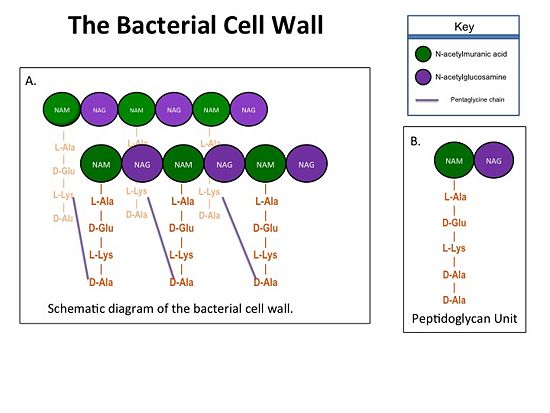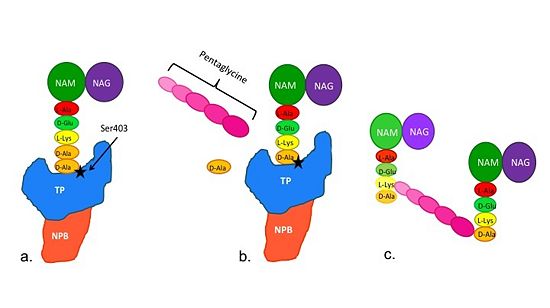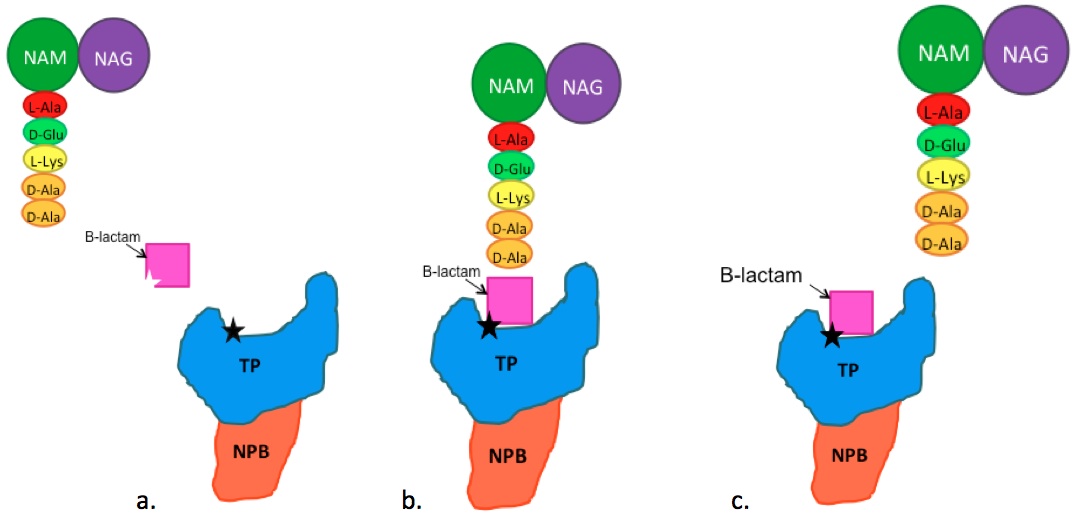Sandbox 128
From Proteopedia
(Difference between revisions)
| Line 21: | Line 21: | ||
==='''Mechanism of Action of B-Lactam antibiotics'''=== | ==='''Mechanism of Action of B-Lactam antibiotics'''=== | ||
The B-Lactam antibiotics inhibit bacterial cell growth by irreversibly inhibiting TP's and, therefore, bacterial cell wall sythesis. Specifically, B-Lactams are molecular mimics of a portion of the peptidoglycan polymer, namely the D-Ala-D-Ala moiety, which is the normal TP enzymatic substrate(Figure 4). As a result, bacterial TP enzymes are "tricked" into reacting with B-Lactams. Additionally, the B-Lactams are very reactive molecules due to their B-lactam ring, and readily react with the TP active site serine residue and sterically block the active site preventing the entry of nucleophiles that regenerate the active site serine residue such as the pentaglycine chain or water. | The B-Lactam antibiotics inhibit bacterial cell growth by irreversibly inhibiting TP's and, therefore, bacterial cell wall sythesis. Specifically, B-Lactams are molecular mimics of a portion of the peptidoglycan polymer, namely the D-Ala-D-Ala moiety, which is the normal TP enzymatic substrate(Figure 4). As a result, bacterial TP enzymes are "tricked" into reacting with B-Lactams. Additionally, the B-Lactams are very reactive molecules due to their B-lactam ring, and readily react with the TP active site serine residue and sterically block the active site preventing the entry of nucleophiles that regenerate the active site serine residue such as the pentaglycine chain or water. | ||
| - | Image:BLactamSchematic2.jpg | + | [[Image:BLactamSchematic2.jpg]] |
==='''Structure of PBP2a, a B-Lactam Resistant Transpeptidase'''=== | ==='''Structure of PBP2a, a B-Lactam Resistant Transpeptidase'''=== | ||
Revision as of 20:09, 30 September 2013
| |||||||||||



